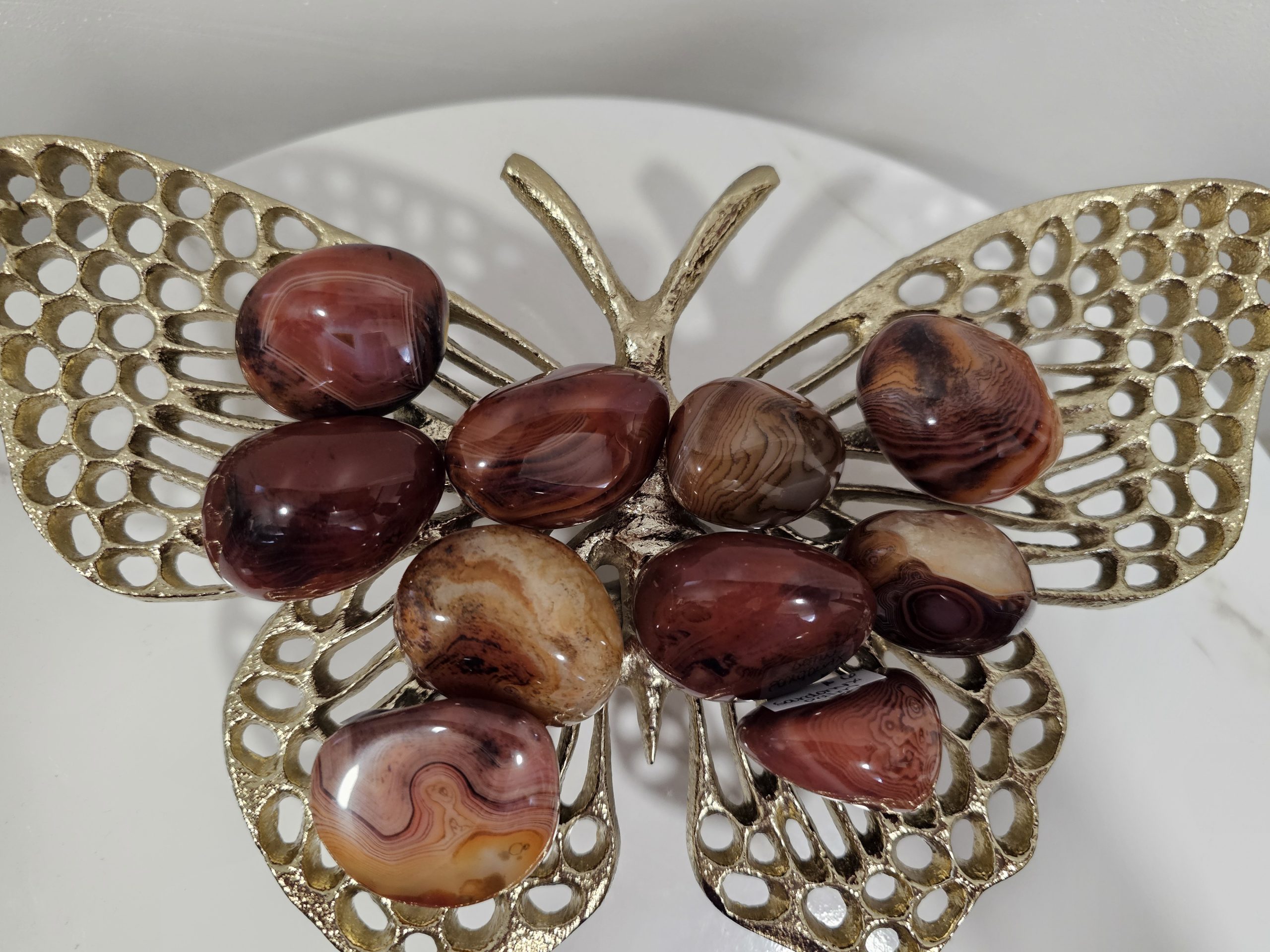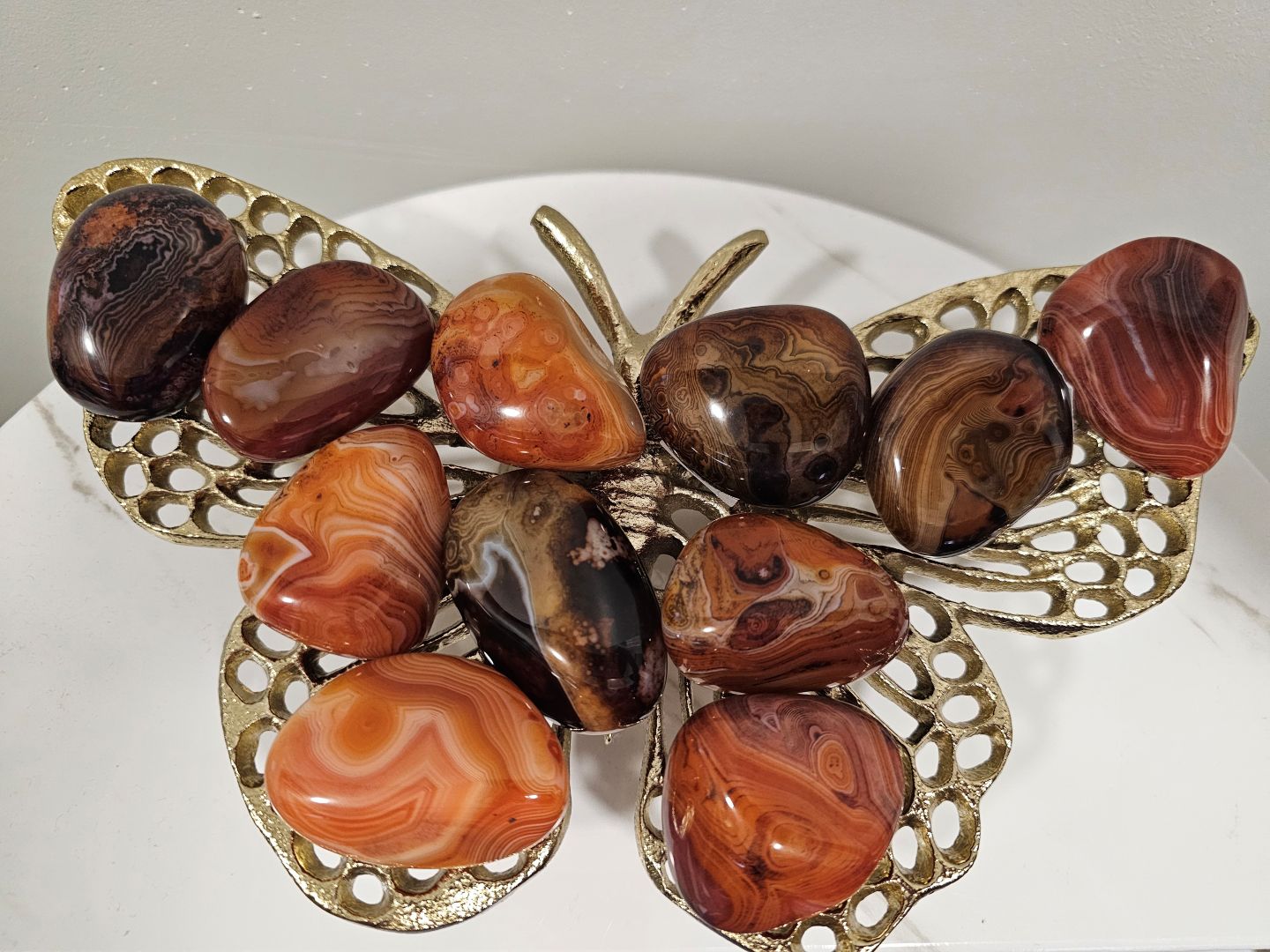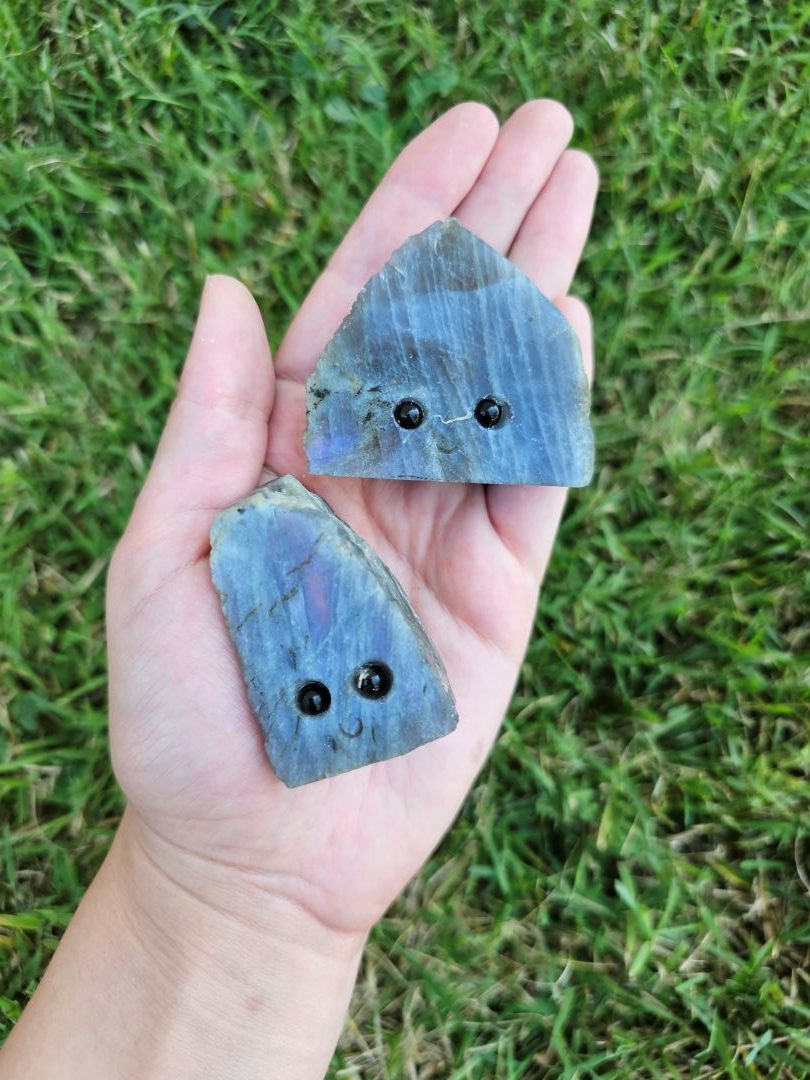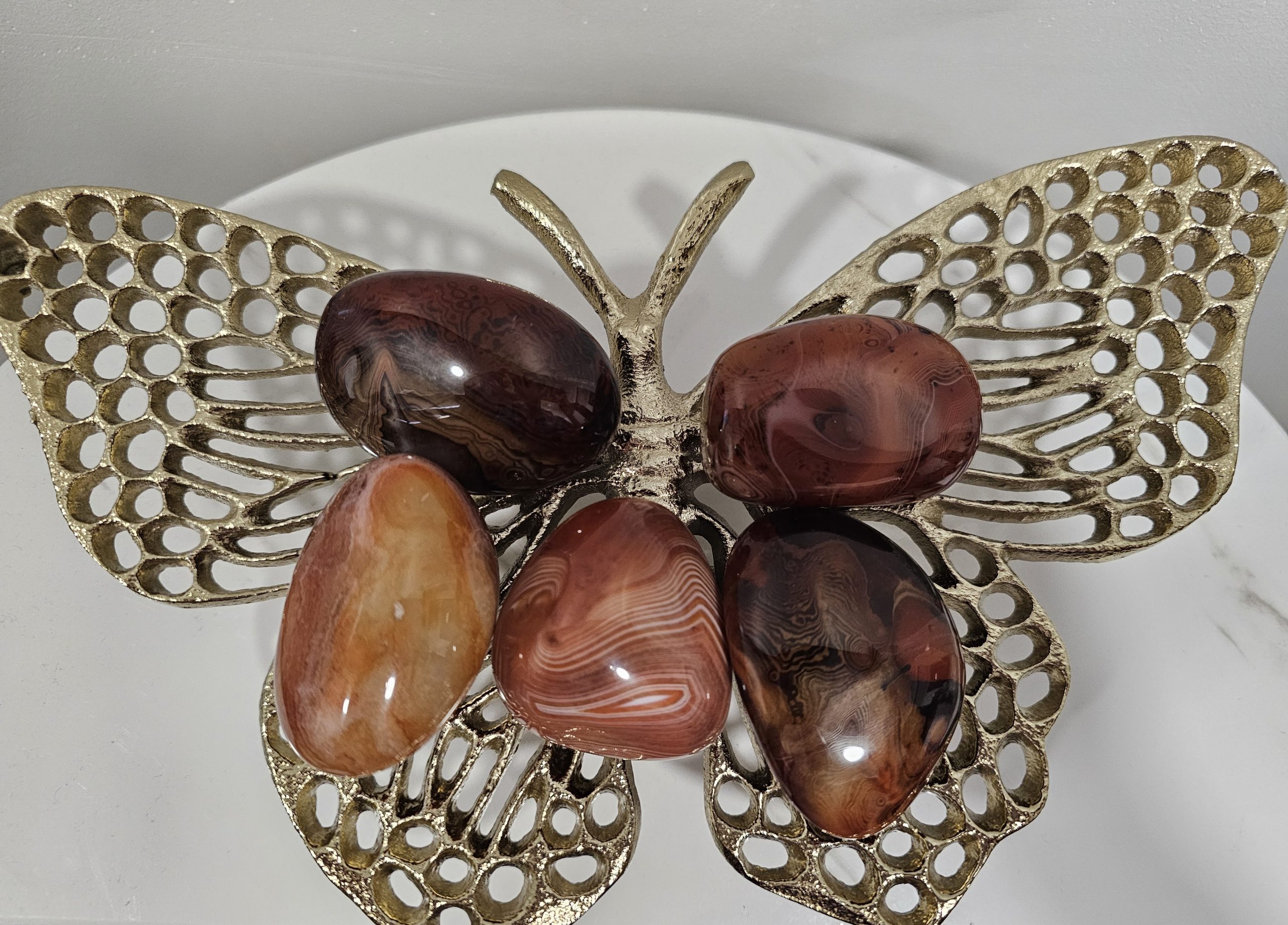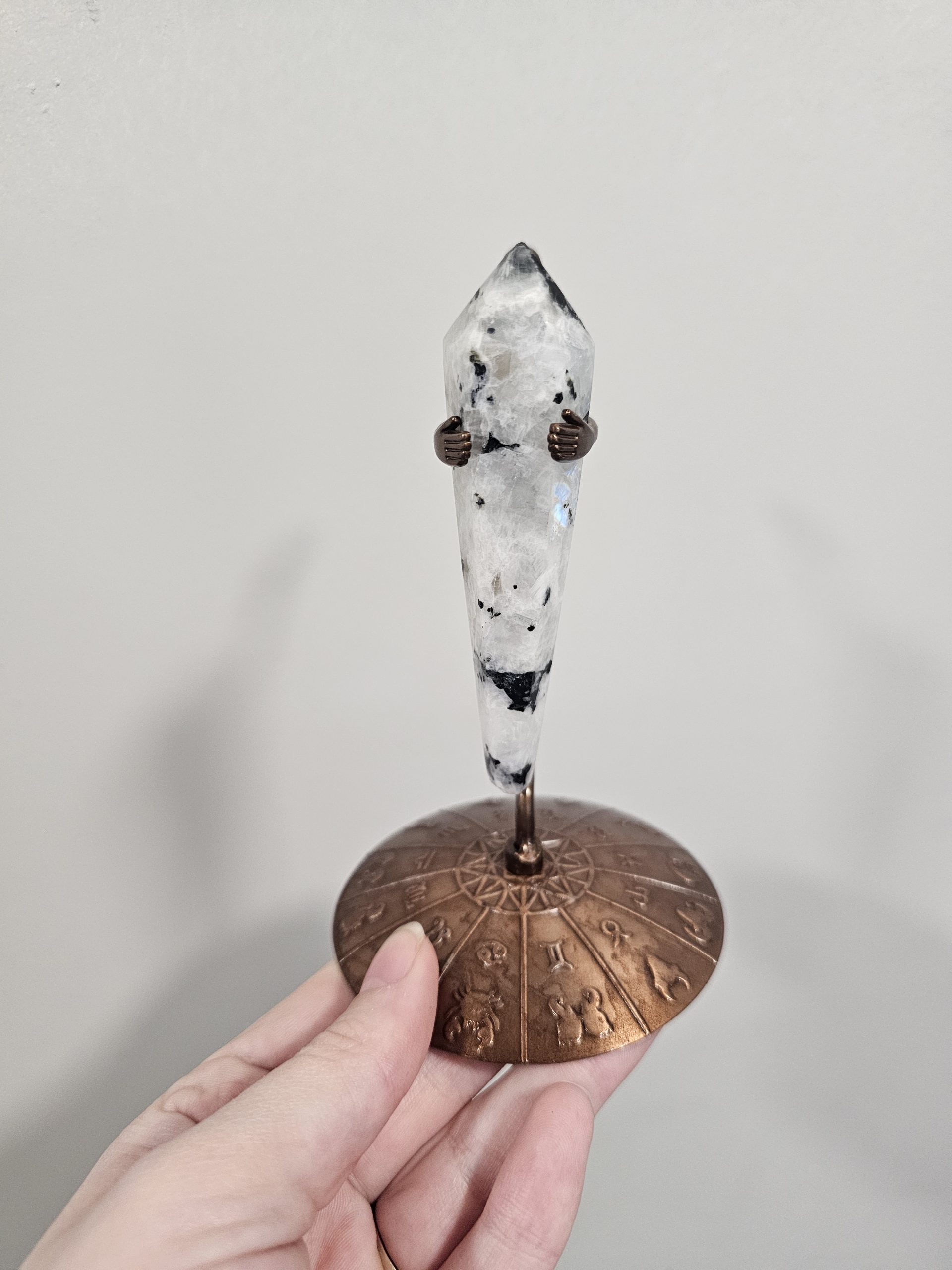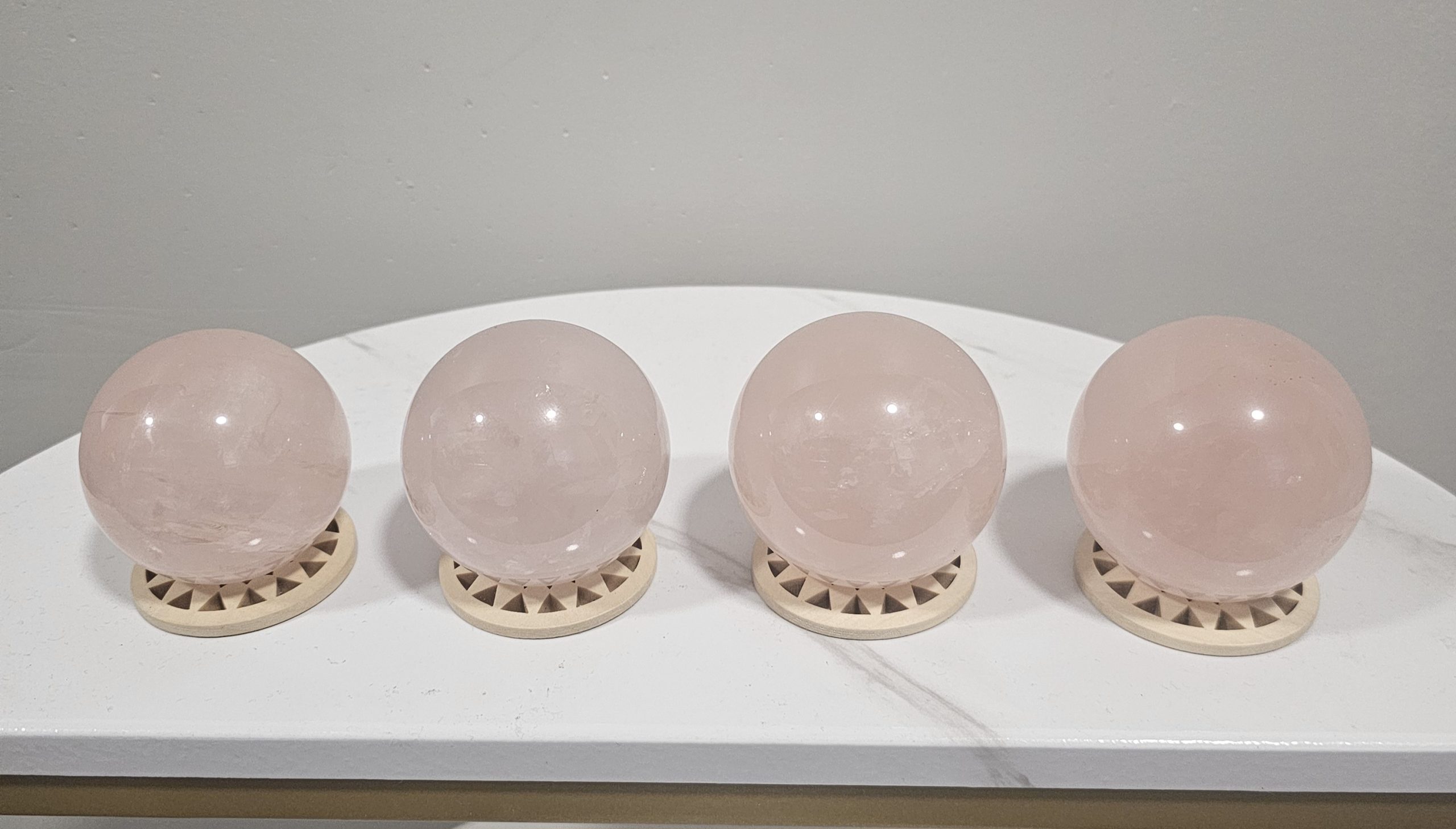-
Moss agate is a semi-precious stone. It is a variety of Chalcedony and it formed from silicon dioxide. The field of this stone is a milky white or clear quartz with blue and green inclusions that form as a result of oxides in the mineral. The dendritic inclusions are mainly made from manganese or iron that grow into patterns to give it the moss look. *All spheres come with a free sphere stand*
-
Sardonyx is a chalcedony crystal who's banding is formed when Silica-rich waters seep into cracks in rocks at low temperatures. Quartz then grows from the deposited silica. These crystals vary in color from a light orange/red to a dark brown color. These crystals are usually found near volcanic activity; In Brazil, India, Germany, Madagascar, and in the US.
-
Sardonyx is a chalcedony crystal who's banding is formed when Silica-rich waters seep into cracks in rocks at low temperatures. Quartz then grows from the deposited silica. These crystals vary in color from a light orange/red to a dark brown color. These crystals are usually found near volcanic activity; In Brazil, India, Germany, Madagascar, and in the US.
-
Labradorite is a type of feldspar that gets it's flashy colors from intergrowths within the mineral. Light then travels through these intergrowths and displays its beautiful colors. These colors can range from purples and blues to greens and yellows. This mineral gets its name from where it was originally discovered, in Labrador, Canada. This mineral was also found in Finland during WWII and was also known as "Falcon's Eye".
-
Sardonyx is a chalcedony crystal who's banding is formed when Silica-rich waters seep into cracks in rocks at low temperatures. Quartz then grows from the deposited silica. These crystals vary in color from a light orange/red to a dark brown color. These crystals are usually found near volcanic activity; In Brazil, India, Germany, Madagascar, and in the US.
-
Moonstone is a sodium potassium aluminum silicate mineral that belongs to the feldspar group. This mineral has a opalescent sheen similar to labradorite and this comes from the light deflection that comes from the feldspar layers within the stone. This beautiful mineral is found in Myanmar, Madagascar, Brazil, Australia, and India.
-
Rose Quartz is an anhedral crystal. It is found in the cores of pegmatites and gets its color from microscopic inclusions of a pink variety of the mineral dumortierite . Rose Quartz is naturally a pink hue but can have more hues of grey/purple or red. This mineral Earth's can be found in many places including South Africa, Madagascar, and Brazil.
-
Fluorite is composed of fluorine and calcium and is formed in hydrothermal veins in the Earth's crust. This mineral can be found in all colors of the rainbow with different hues. The different colors in Fluorite are caused by impurities within the mineral. The deeper colors are found in well-formed crystals. Fluorite was originally discovered in Illinois in 1842 but is no longer mined in the US. It can be found in China, South Africa, Mongolia, France, and Russia. *All spheres come with a free stand*
-
Moonstone is a sodium potassium aluminum silicate mineral that belongs to the feldspar group. This mineral has a opalescent sheen similar to labradorite and this comes from the light deflection that comes from the feldspar layers within the stone. This beautiful mineral is found in Myanmar, Madagascar, Brazil, Australia, and India.
-
Rose Quartz is an anhedral crystal. It is found in the cores of pegmatites and gets its color from microscopic inclusions of a pink variety of the mineral dumortierite . Rose Quartz is naturally a pink hue but can have more hues of grey/purple or red. This mineral Earth's can be found in many places including South Africa, Madagascar, and Brazil.
-
Dream amethyst (also known as Chevron Amethyst) is a natural mineral formed when amethyst and white quartz fuse together while cooling down off after a volcanic eruption. The amethyst that fuses to the white quartz creates the chevron-like shapes in the crystals. The main areas Dream Amethyst can be found is Brazil, Namibia, and Morocco.


